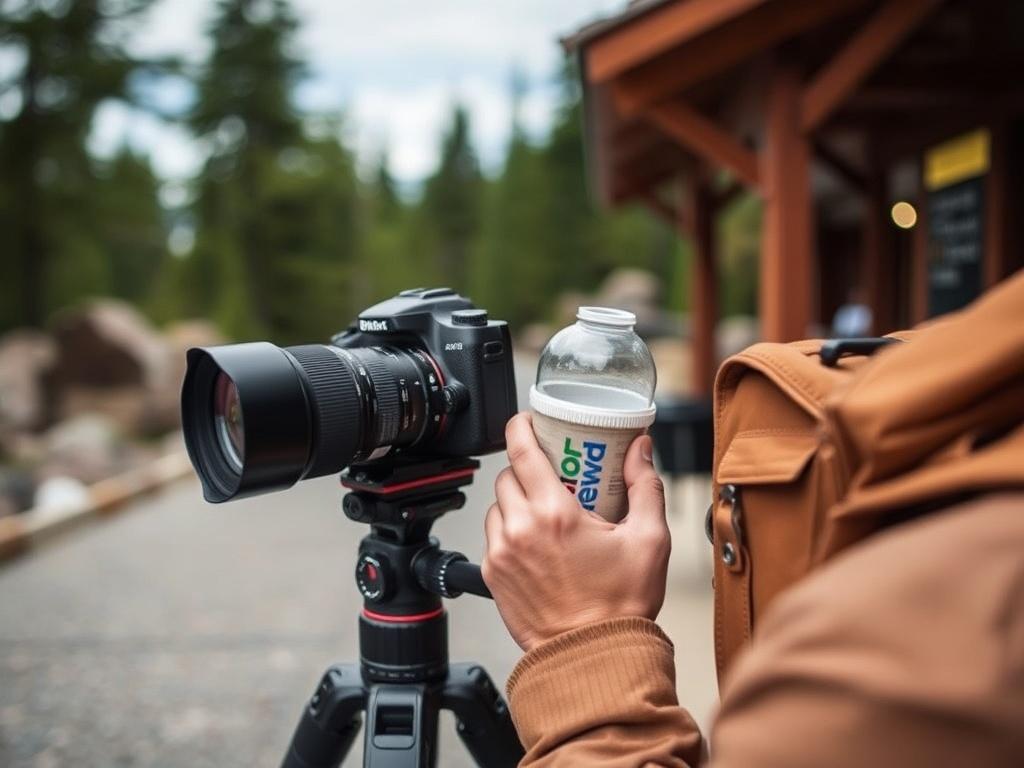
How to Travel with Expensive Equipment: A Complete Guide to Keeping Your Gear Safe
Traveling with expensive equipment can be both exciting and nerve-wracking. Whether you’re a professional photographer, a musician, a tech enthusiast, or someone who simply cherishes their high-value gear, the challenge of protecting your investment while on the move is real. No one wants to arrive at their destination to find their equipment damaged, lost, or stolen. But with careful planning and smart strategies, traveling with expensive equipment doesn’t have to be stressful. In fact, it can be an enjoyable part of your adventure.
In this article, we’ll break down everything you need to know about how to travel with expensive equipment—step by step. From packing tips and airline regulations to insurance and security best practices, we’ll cover it all. Whether you’re flying internationally, driving across state lines, or shipping your gear ahead, these practical tips will help ensure your precious equipment remains safe, secure, and ready to perform when you need it most.
Understanding the Challenges of Traveling with Expensive Equipment
Traveling with expensive equipment poses unique challenges, especially when it comes to airport security, baggage handling, and transportation modes. Unlike regular luggage, delicate electronics, cameras, musical instruments, or scientific devices require extra care. Mishandling can easily damage sensitive components, or worse, lead to theft.
One of the biggest hurdles is navigating airline policies. Many airlines have restrictions on carrying oversized or heavy equipment in the cabin and may require special handling or fees for checked bags that exceed size or weight limits. Additionally, airport security may require unpacking certain items for inspection, increasing the risk of misplacement or damage.
In addition to the physical challenges, there’s the emotional aspect of worrying about your gear at every step of your journey. This introductory understanding helps set the stage for how you can plan to travel confidently with your valued equipment.
Choosing the Right Travel Cases and Packing Methods
Investing in the right travel case is arguably the most important step when learning how to travel with expensive equipment. The proper case offers protection from physical shock, moisture, dust, and temperature fluctuations. Here’s a simple guide on what to consider when selecting your gear’s travel case:
- Hard vs. Soft Cases: Hard cases are typically waterproof, crushproof, and lockable. They’re ideal for high-value equipment needing maximum protection. Soft cases are lighter and easier to carry but offer less impact resistance.
- Custom Foam Inserts: Interior foam padding that molds to your equipment contours prevents unwanted movement and absorbs shock. This is essential for fragile or oddly shaped items.
- Water Resistance: Weatherproof cases safeguard gear from rain, spills, or humidity, which is critical for electronics and metal instruments.
- Size and Portability: Consider how often you’ll be carrying the case. Cases with wheels and telescoping handles can make traveling through airports and hotels easier.
A well-packed case not only keeps your equipment safe but also helps you organize accessories such as chargers, cables, and lenses. Here’s an example table comparing popular case types:
| Case Type | Protection Level | Weight | Portability | Best For |
|---|---|---|---|---|
| Hard Plastic Case | High | Heavy | Usually Wheeled | Photography, Electronics |
| Soft Padded Bag | Medium | Light | Backpack or Shoulder | Musical Instruments, Laptops |
| Pelican Case with Foam | Very High | Heavy | Wheeled and Portable | Scientific Equipment, Cameras |
| Custom Wooden Box | High | Very Heavy | Not Portable | Fragile, Bulky Items |
Packing Tips to Maximize Protection
In addition to choosing the right case, how you pack your equipment matters just as much. Layer your gear carefully, and use bubble wrap, silica packets to absorb moisture, and cable ties to keep wires neat and undamaged. Avoid packing too tightly to prevent pressure damage but don’t leave gear loose inside the case.
When packing items like cameras or lenses, detach delicate accessories and pack them separately in smaller padded cases. Label your equipment clearly with your contact info in case the bag is misplaced. Always keep batteries and lithium-ion packs according to airline safety regulations.
Airline Regulations and Traveling by Plane with Expensive Equipment
Flying with expensive equipment requires some extra preparation. Before booking your ticket, check airline policies regarding carry-on and checked luggage size, weight restrictions, and fees. Many airlines have specific guidelines for fragile or high-value items.
A key tip is to carry your most valuable equipment as carry-on baggage whenever possible. This keeps your gear within sight and under your direct supervision, minimizing the risk of theft or damage during transit. Just make sure your equipment fits the allowed carry-on dimensions.
You’ll need to declare special equipment at check-in and possibly during security screening. Keep in mind some equipment may require special permits or documentation, such as drones or professional audio devices. Always check the Transportation Security Administration (TSA) rules in the U.S. or the equivalent authorities in your travel country. Here are a few tips to simplify air travel with expensive equipment:
- Contact your airline in advance to inform them about your equipment.
- Use TSA-approved locks for your hard cases to balance security and accessibility.
- Arrive early at the airport to manage check-in and security smoothly.
- Prepare for physical inspection; have batteries and accessories easily removable.
- Ask for fragile tags on checked bags.
Understanding Customs and International Travel
When traveling internationally, customs regulations come into play. Expensive equipment may be subject to import taxes or require declarations upon arrival and departure. To avoid surprises, prepare documentation proving ownership, value, and purpose. Commercial invoice copies, serial numbers, and photos help clarify your case.
Consider obtaining a Carnet de Passage or ATA carnet—a passport for your professional equipment that allows temporary import/export without paying duty fees. Many countries accept these, making customs clearance smoother.
Insurance: Protecting Your Investment on the Road
No matter how well you pack or guard your gear, accidents and theft can still happen. That’s why insurance is a vital step when traveling with expensive equipment. Whether it’s flight delays, lost baggage, accidental damage, or theft, proper insurance coverage offers peace of mind.
There are several options for insurance:
- Homeowners or Renters Insurance: Some policies cover personal equipment even when traveling, but check for limitations, deductibles, and territory coverage.
- Specialized Equipment Insurance: Many companies offer policies specifically for cameras, musical instruments, or tech gear, covering risks like accidental damage, theft, or loss.
- Travel Insurance Add-Ons: Some travel policies include expensive equipment coverage as an add-on, handy for short-term trips.
Before you get insurance, make an inventory of all your gear with detailed descriptions and values. Keep receipts and take photos for reliable proof. Knowing exactly what’s insured and how to file claims ensures you get reimbursed quickly if needed.
Security Best Practices While Traveling
Keeping your expensive equipment safe goes beyond packing and choosing the right case. Your behavior during your journey significantly affects the risk your gear faces. Here are some security best practices to consider:
- Never leave equipment unattended in public areas.
- Use locks and tamper-evident seals on cases.
- Keep your gear in sight or locked in a hotel safe when possible.
- Stay aware of your surroundings, especially in crowded transportation hubs.
- Consider RFID-blocking bags to protect sensitive data on certain devices.
- Label your equipment discreetly but distinctly for easier recovery if lost.
Using Technology to Track Your Gear
GPS trackers and Bluetooth-enabled devices have become a popular and effective way to monitor expensive equipment. Lightweight trackers can be hidden inside cases or attached externally, allowing you to track location via smartphone apps.
Some advanced options even offer geofencing alerts, notifying you if your gear is moved without permission. This added layer of security helps you act quickly if theft or loss occurs.
Traveling with Specific Types of Equipment
Different types of expensive equipment come with their own unique considerations. Here’s a quick look at some common gear and tips tailored for traveling with each:
| Equipment Type | Key Travel Tips |
|---|---|
| Cameras and Lenses | Carry cameras as hand luggage, remove batteries at security, use custom foam inserts, keep silica gel for humidity control. |
| Musical Instruments | Use hard cases with padded interiors, request gate checking for larger instruments, check airline policies for oversize. |
| Computers and Electronics | Back up data before travel, use anti-static packing, keep chargers accessible, declare all batteries properly. |
| Scientific Instruments | Prepare detailed documentation for customs, pack in shock-absorbent cases, insure comprehensively. |
| Drones | Check airline and country regulations, pack batteries separately, carry manuals and registration documents. |
Shipping Versus Carrying Your Equipment
Sometimes, traveling by plane or public transport with equipment isn’t ideal or feasible. In such cases, shipping your gear ahead can be a smart option. However, shipping requires its own set of precautions:
- Use reputable courier services with tracking options and declared value coverage.
- Ensure packaging is robust with shock-proof materials and waterproof liners.
- Label boxes with “Fragile” and your contact information clearly.
- Ship early to avoid delays affecting your schedule.
- Keep insurance to cover loss or damage during transit.
Weigh the pros and cons between carrying versus shipping based on convenience, cost, and equipment sensitivity. In many situations, a combination strategy works best—carry irreplaceable items personally and ship bulkier or replaceable parts.
Summary of Practical Do’s and Don’ts
To help you remember the essentials, here is a practical list highlighting what to do and what to avoid when traveling with expensive equipment:
| Do’s | Don’ts |
|---|---|
| Invest in quality, protective cases. | Avoid checking valuable equipment unless strictly necessary. |
| Carry important gear as hand luggage. | Don’t pack batteries in checked luggage. |
| Document everything and get insurance. | Don’t assume your homeowner’s insurance will cover all travel scenarios. |
| Label all your gear with contact info. | Don’t leave equipment unattended or in unsecure locations. |
| Inform airlines and customs in advance. | Don’t wait until the last minute to prepare paperwork and packing. |
Conclusion
Traveling with expensive equipment doesn’t have to be a source of anxiety if you approach it thoughtfully. By choosing the right cases, understanding airline and customs regulations, carrying out proper packing, securing insurance, and practicing vigilant security habits, you protect both your gear and your peace of mind. Whether it’s through smart planning, using technology like GPS trackers, or opting for professional shipping services, each step adds a layer of safety that ensures your investment reaches your destination intact. The key is preparation, organization, and staying informed—so you can focus on what really matters: making the most of your journey and your equipment’s potential. Safe travels!



